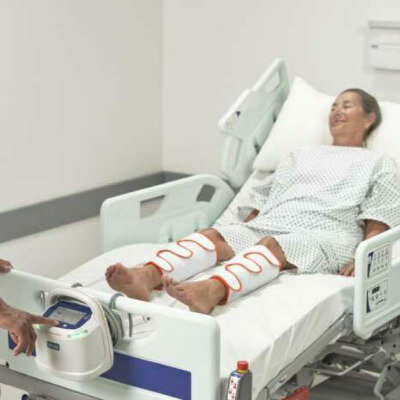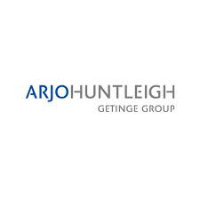Novel App Measures BP without Accessories
|
By HospiMedica International staff writers Posted on 18 Sep 2018 |

Image: An innovative oscillometric method can measure BP on a cell phone (Photo courtesy of MSU).
A new study describes how oscillometric finger pressing (colloquially known as “Peek and Pop”) can provide accurate blood pressure (BP) readings on an iPhone, with no special equipment.
Developed at Michigan State University (MSU; East Lansing, USA), the new application, designed for the iPhone X, visually guides fingertip placement and actuation on both the front camera and screen in order to artificially increase the external pressure of the underlying transverse palmer arch artery. The app then measures both variable-amplitude blood volume oscillations via the camera, and applied pressure via the strain gauge array under the screen to compute BP from the measurements, similar to automatic cuff devices.
In a proof of concept test conducted in 18 volunteers, against both a finger cuff BP and a standard cuff device, the app yielded bias and precision errors of -4.0 and 11.4 mmHg for systolic BP, and -9.4 and 9.7 mmHg for diastolic BP, respectively; the errors were closer to the finger cuff device errors. According to the researchers, the study indicates that cuff-less and calibration-free BP monitoring may be feasible with many existing and forthcoming smartphones. The study was published on September 3, 2018, in Scientific Reports.
“By leveraging optical and force sensors already in smartphones for taking selfies and employing ‘peek and pop’, we've invented a practical tool to keep tabs on blood pressure,” said lead author Professor Ramakrishna Mukkamala, PhD, of the MSU electrical and computer engineering department. “Such ubiquitous blood pressure monitoring may improve hypertension awareness and control rates, and thereby help reduce the incidence of cardiovascular disease and mortality.”
The oscillometric method of measuring blood pressure involves occluding a major artery, typically the brachial artery in the arm with an external pneumatic cuff. When the pressure in the cuff is higher than the blood pressure inside the artery, the artery collapses. As the pressure in the external cuff is slowly decreased, blood begins to spurt through the artery, causing the famous Korotkoff sounds. The pressure measured in the cuff region when blood first passes through is an estimate of systolic pressure. The pressure measured when blood first starts to flow continuously is an estimate of diastolic pressure.
Related Links:
Michigan State University
Developed at Michigan State University (MSU; East Lansing, USA), the new application, designed for the iPhone X, visually guides fingertip placement and actuation on both the front camera and screen in order to artificially increase the external pressure of the underlying transverse palmer arch artery. The app then measures both variable-amplitude blood volume oscillations via the camera, and applied pressure via the strain gauge array under the screen to compute BP from the measurements, similar to automatic cuff devices.
In a proof of concept test conducted in 18 volunteers, against both a finger cuff BP and a standard cuff device, the app yielded bias and precision errors of -4.0 and 11.4 mmHg for systolic BP, and -9.4 and 9.7 mmHg for diastolic BP, respectively; the errors were closer to the finger cuff device errors. According to the researchers, the study indicates that cuff-less and calibration-free BP monitoring may be feasible with many existing and forthcoming smartphones. The study was published on September 3, 2018, in Scientific Reports.
“By leveraging optical and force sensors already in smartphones for taking selfies and employing ‘peek and pop’, we've invented a practical tool to keep tabs on blood pressure,” said lead author Professor Ramakrishna Mukkamala, PhD, of the MSU electrical and computer engineering department. “Such ubiquitous blood pressure monitoring may improve hypertension awareness and control rates, and thereby help reduce the incidence of cardiovascular disease and mortality.”
The oscillometric method of measuring blood pressure involves occluding a major artery, typically the brachial artery in the arm with an external pneumatic cuff. When the pressure in the cuff is higher than the blood pressure inside the artery, the artery collapses. As the pressure in the external cuff is slowly decreased, blood begins to spurt through the artery, causing the famous Korotkoff sounds. The pressure measured in the cuff region when blood first passes through is an estimate of systolic pressure. The pressure measured when blood first starts to flow continuously is an estimate of diastolic pressure.
Related Links:
Michigan State University
Channels
Critical Care
view channel
Bioadhesive Strategy Prevents Fibrosis Around Device Implants on Peripheral Nerves
Peripheral nerves connect the brain and spinal cord to muscles, organs, and sensory systems, making them key targets for treating neurological and systemic diseases. However, implantable bioelectronic... Read more
Miniature Non-Invasive Robotic Catheters to Improve Infertility Treatments
Minimally invasive procedures in reproductive and gynaecological medicine are often limited by the difficulty of navigating narrow, delicate anatomical pathways without damaging surrounding tissue.... Read moreSurgical Techniques
view channel
Catheter-Based Procedures Offer Less Invasive Option for Treatment of Valvular Disease
Valvular heart disease, caused by tight or leaky valves between heart chambers, affects up to 10% of older adults and leads to more than 120,000 deaths globally each year. Traditional open-heart surgery... Read moreLaparoscopic Surgery Improves Outcomes for Severe Newborn Liver Disease
Biliary atresia is a rare but life-threatening liver condition in newborns that blocks bile flow and leads to progressive liver damage if not treated early. Surgery is typically performed within the first... Read morePatient Care
view channel
Revolutionary Automatic IV-Line Flushing Device to Enhance Infusion Care
More than 80% of in-hospital patients receive intravenous (IV) therapy. Every dose of IV medicine delivered in a small volume (<250 mL) infusion bag should be followed by subsequent flushing to ensure... Read more
VR Training Tool Combats Contamination of Portable Medical Equipment
Healthcare-associated infections (HAIs) impact one in every 31 patients, cause nearly 100,000 deaths each year, and cost USD 28.4 billion in direct medical expenses. Notably, up to 75% of these infections... Read more
Portable Biosensor Platform to Reduce Hospital-Acquired Infections
Approximately 4 million patients in the European Union acquire healthcare-associated infections (HAIs) or nosocomial infections each year, with around 37,000 deaths directly resulting from these infections,... Read moreFirst-Of-Its-Kind Portable Germicidal Light Technology Disinfects High-Touch Clinical Surfaces in Seconds
Reducing healthcare-acquired infections (HAIs) remains a pressing issue within global healthcare systems. In the United States alone, 1.7 million patients contract HAIs annually, leading to approximately... Read moreBusiness
view channel
Philips and Masimo Partner to Advance Patient Monitoring Measurement Technologies
Royal Philips (Amsterdam, Netherlands) and Masimo (Irvine, California, USA) have renewed their multi-year strategic collaboration, combining Philips’ expertise in patient monitoring with Masimo’s noninvasive... Read more
B. Braun Acquires Digital Microsurgery Company True Digital Surgery
The high-end microsurgery market in neurosurgery, spine, and ENT is undergoing a significant transformation. Traditional analog microscopes are giving way to digital exoscopes, which provide improved visualization,... Read more
CMEF 2025 to Promote Holistic and High-Quality Development of Medical and Health Industry
The 92nd China International Medical Equipment Fair (CMEF 2025) Autumn Exhibition is scheduled to be held from September 26 to 29 at the China Import and Export Fair Complex (Canton Fair Complex) in Guangzhou.... Read more














